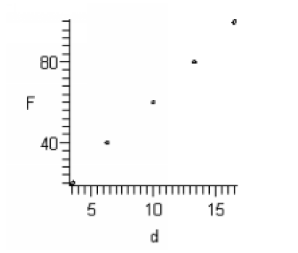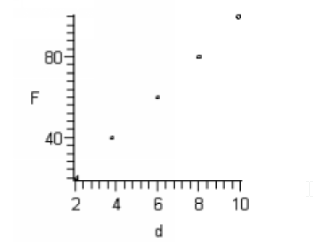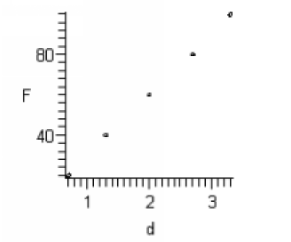Hooke’s Law states that the force F required to compress or stretch a spring (within its elastic limits) is proportional to the distance d that the spring is compressed or stretched from its original length. That is, where k is the measure of the stiffness of the spring and is called the spring constant. The table below shows the elongation d in centimeters of a spring when a force of F kilograms is applied.
Sketch a scatter plot of the data.

a. 
b. 
c. 
d. 
e. 
b. 
Mathematics
You might also like to view...
Provide an appropriate response.Explain what is wrong with the statement "The line has no slope."
What will be an ideal response?
Mathematics
Write the vector in the form  . Round values to the nearest hundredth when appropriate.
. Round values to the nearest hundredth when appropriate.
A. 
B. 
C. 
D. 
Mathematics
Find the equilibrium values for B and F.
Chemicals enter a house’s basement air. Let F (t ) and B(t ) be the amount of chemical (in mg m3 ) in the first floor air and the basement air after t minutes, respectively. Let’s suppose that the rate of change of F and B are given by the equations: B'= -0.012 + 0.12 and F' = 0.015 - 0.02F What will be an ideal response?
Mathematics
Write the matrix equation as a linear system of equations.
 =
= 
A. 
B. 
C. 
D. 
Mathematics